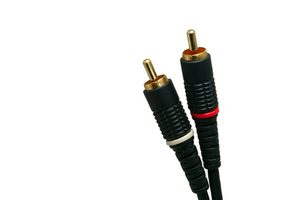A little bit of knowledge is a dangerous thing — that’s what your old Grandpa used to say. Car audio systems seem like about the simplest proposition in the world; use your brain, follow the cables, and connect stuff where it’s supposed to go. What’s hard about that? But audio systems are just like any other electrical system, and a lot can go wrong in the details. Once of them is the nefarious "ground loop," which is a phenomena that induces a maddening hum in the speakers. A "ground loop isolator" is a good temporary fix, but this might be a good time to talk to a pro about finding a more permanent solution.
Things You’ll Need
- Ground loop isolator
-
Turn the system off. Open the trunk or hatch and locate the amplifier, or locate the amp and its RCA jacks wherever they are in the car.
-
Unplug the RCA cables from the amplifier. Plug the red and white RCA connectors into their respective — usually color-coded — jacks on the ground loop isolator.
-
Plug the red and white RCA cables extending from the ground loop isolator into the amplifier.
-
Ground the ground loop isolator by screwing the terminal into a bare metal spot of the car or by plugging it in to the negative terminal of the amp. Some ground loop isolators are self-grounded while others require this step. If the ground loop isolator has additional wires — beside the RCA cables– they are for grounding.
Tips & Warnings
- Ground loop isolators are considered a band-aid, as they suppress a problem that was created during installation. The only true way to fix the problem is to find the cause of the noise and eliminate it. Sometimes running the power wire down one side of the car and the RCA cables down the other will fix the problem. One common cause is using power wire that is too small for the audio system. Both induce a magnetic field in the signal wire, which is likely the cause of your noise.
